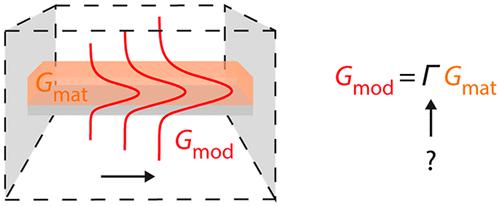当前位置:
X-MOL 学术
›
ACS Photonics
›
论文详情
Our official English website, www.x-mol.net, welcomes your
feedback! (Note: you will need to create a separate account there.)
Understanding Optical Gain: Which Confinement Factor is Correct?
ACS Photonics ( IF 6.5 ) Pub Date : 2022-11-07 , DOI: 10.1021/acsphotonics.2c01222 Marianne Aellen 1 , David J. Norris 1
ACS Photonics ( IF 6.5 ) Pub Date : 2022-11-07 , DOI: 10.1021/acsphotonics.2c01222 Marianne Aellen 1 , David J. Norris 1
Affiliation

|
Photonic amplifiers and lasers require optical gain to be extracted from a medium. To optimize this process, the confinement factor (Γ) connects the actual gain experienced by an electromagnetic mode in a device (modal gain) to the intrinsic gain available from the active medium (material gain). We might intuit that Γ is simply the modal overlap with the gain region, either as a power or energy ratio. Indeed, such formulations are commonly used for Γ. However, they fail to capture the physics, particularly when the amplified modes are confined in a waveguide. Here, we review a more general and accurate description of the confinement factor. Using numerical examples, we discuss the validity and limitations of different expressions. Only the general formula properly describes Γ, especially for slow guided modes for which Γ exceeds unity. This work aims to clarify the confinement factor for the design of nanophotonic and plasmonic devices.
中文翻译:

了解光增益:哪个限制因子是正确的?
光子放大器和激光器需要从介质中提取光增益。为了优化这个过程,限制因子 (Γ) 将设备中电磁模式所经历的实际增益(模态增益)与有源介质可用的固有增益(材料增益)联系起来。我们可能凭直觉认为 Γ 只是与增益区域的模态重叠,可以是功率比,也可以是能量比。实际上,此类公式通常用于 Γ。然而,它们无法捕捉物理现象,尤其是当放大模式被限制在波导中时。在这里,我们回顾了对限制因子的更一般和准确的描述。使用数值示例,我们讨论了不同表达式的有效性和局限性。只有通用公式正确描述了 Γ,特别是对于 Γ 超过单位的慢导模。
更新日期:2022-11-07
中文翻译:

了解光增益:哪个限制因子是正确的?
光子放大器和激光器需要从介质中提取光增益。为了优化这个过程,限制因子 (Γ) 将设备中电磁模式所经历的实际增益(模态增益)与有源介质可用的固有增益(材料增益)联系起来。我们可能凭直觉认为 Γ 只是与增益区域的模态重叠,可以是功率比,也可以是能量比。实际上,此类公式通常用于 Γ。然而,它们无法捕捉物理现象,尤其是当放大模式被限制在波导中时。在这里,我们回顾了对限制因子的更一般和准确的描述。使用数值示例,我们讨论了不同表达式的有效性和局限性。只有通用公式正确描述了 Γ,特别是对于 Γ 超过单位的慢导模。











































 京公网安备 11010802027423号
京公网安备 11010802027423号